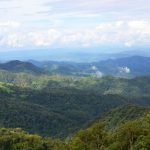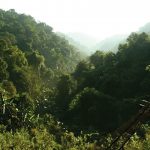Location
Luang Namtha Province
Area:
2,224 sq km
Date declared as an AHP:
18 December 2003, at the Signing of ASEAN Declaration on Heritage Parks
Contact information
Toui Kingmala
AHP Manager
Tel.: +856 86212152, +856 86312214
E-mail: toui100@yahoo.com
Unique Flora: Aquilaria trees; cardamom; Jewel orchid; Cinnamomum sp.; bamboos and rattans; dipterocap trees; Castanopsis stands
Unique Fauna: Clouded leopard; leopard; tiger; gaur; muntjac, Asian elephants; black-cheeked gibbon; northern pigtail;rhesus macaques; great flocks of butterflies including the leaf butterfly (Kallima sp.); Papilio and Graphium species; Indian purple emperor (Mimathyma ambica); silver pheasant (Lophurany cthemera); Blythe’s kingfisher; great hornbill (Buceros bicornis); green peacock (Pavo muticus).
Habitat Types: Evergreen gallery forests, semi-evergreen forests, subtropical Castanopsis forest, sub-montane forests on the higher peaks, mosaic of grasslands, limestone forests on the karst portions, caves, freshwater streams, secondary scrub, and village lands
Spectacular views, caves, waterfalls, and other natural and cultural landscapes await those who would visit this protected area. Activities to enjoy include trekking, hiking, kayaking, rafting, mountain biking, and boat tours through villages of Luang Namtha, Muang Sing, Vieng Phoukha and Long. Visitors can also spend the night as homestays in local villages.
Tourists can also observe the minority groups and their own distinct culture and colorful costumes. These groups live relatively customary lifestyles and have a strong tradition in herbal medicine.




